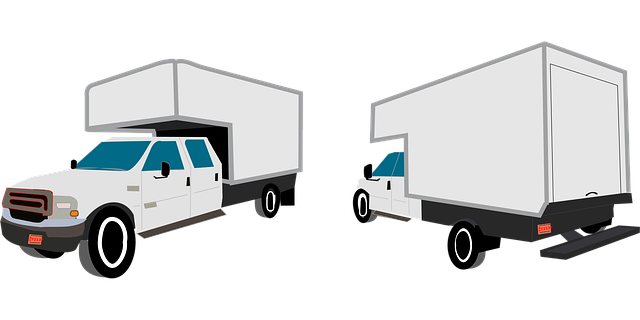Looking to register your car in California? This comprehensive guide walks you through the entire process, ensuring a smooth experience. From understanding crucial registration requirements and gathering essential documents to navigating DMV procedures, we’ve got you covered. Learn about the importance of performing a VIN (Vehicle Identification Number) verification and completing the application process efficiently. Get ready to hit the road with your registered vehicle!
- Understand California Car Registration Requirements
- Gather Necessary Documents for DMV Visit
- Perform VIN Verification: Steps and Importance
- Complete Application Process at DMV Office
- Pay Registration Fees and Obtain Your License Plate
Understand California Car Registration Requirements

Before registering your car in California, it’s crucial to understand the state’s specific requirements. The California Department of Motor Vehicles (DMV) mandates several key steps for new and existing vehicle owners. One vital aspect is the Vehicle Identification Number (VIN) verification process. This involves a thorough check of your car’s unique VIN to ensure it matches the vehicle’s details on record.
A mobile vin verifier or mobile vin inspection service can be particularly useful in this process. These services offer convenient, on-site VIN checks, allowing you to verify your car’s history quickly and efficiently. By utilizing a mobile vin verification tool, you can streamline the registration process, ensuring a smoother transition for getting your vehicle registered with the California DMV.
Gather Necessary Documents for DMV Visit

Before visiting a California DMV office, make sure to gather all the essential documents for a smooth registration process. This includes your vehicle’s title, which you’ll need to prove ownership. You can obtain this from the previous owner or through an online title transfer if applicable. Additionally, bring along your valid driver’s license and proof of insurance to ensure uninterrupted registration.
For a quicker and more convenient process, consider performing a DMV VIN verification. This involves checking your vehicle’s unique identifier, known as the Vehicle Identification Number (VIN), which can be done through various methods. Some services even offer mobile VIN inspection or verification, allowing you to complete this step from the comfort of your home or on the go.
Perform VIN Verification: Steps and Importance

Before registering your car in California, it’s crucial to perform a Vehicle Identification Number (VIN) verification, which is a critical step ensured by the Department of Motor Vehicles (DMV). This process involves cross-referencing the unique VIN of your vehicle against reliable databases to establish its authenticity and history. A mobile vin verifier or even a simple vin inspection can help you complete this task efficiently.
The steps for VIN verification are straightforward. First, obtain the VIN from your vehicle’s label, usually found on the driver’s side door frame. Then, access an approved online VIN checking service or use a mobile vin inspection app to input the number. The system will retrieve information such as the car’s make, model, year, and previous owners, helping you identify any potential issues related to odometer rollback or outstanding recalls. This step is essential to ensure that the vehicle matches the details on its registration documents, safeguarding against fraud and ensuring a smooth registration process with the DMV.
Complete Application Process at DMV Office

To complete the car registration process in California, you’ll need to visit a DMV office and submit all required documents. The application process involves several key steps, including a thorough vehicle inspection known as VIN verification. This step ensures that your car meets safety and environmental standards before it can be officially registered. During the VIN verification, a DMV inspector will check for any outstanding issues with the vehicle’s title, registration history, and overall condition using the unique Vehicle Identification Number (VIN).
The process begins by filling out an application form at the DMV office. You’ll need to bring along proof of insurance, a valid driver’s license, and your car’s registration from its previous state (if applicable). Additionally, you might consider utilizing a mobile VIN verifier for added convenience. This service allows you to obtain real-time data about your vehicle’s history without having to physically visit a DMV location. Once all documents are in order, an inspector will perform the VIN inspection and issue the necessary paperwork if your car passes the verification.
Pay Registration Fees and Obtain Your License Plate

After completing your vehicle’s registration application at the California DMV, it’s time to pay the registration fees. These fees vary based on your vehicle’s type and age. Once paid, you’ll receive a temporary registration permit that allows you to legally operate your car while awaiting your license plate.
Obtaining your license plate involves an additional step: VIN verification. You can conduct this through a mobile vin inspection or use a mobile vin verifier to ensure the information on your vehicle’s Certificate of Ownership matches its Vehicle Identification Number (VIN). Once verified, present these documents at a DMV location to get your permanent license plate. This crucial process helps prevent fraud and ensures that your car is officially registered with accurate details.
Registering a car in California involves understanding state requirements, gathering essential documents, and completing a straightforward process at the DMV. After ensuring your vehicle meets all regulations, including successful VIN verification, you can pay the necessary fees and obtain your license plate, marking the official registration of your vehicle. Remember, proper documentation and adherence to procedures are key to a smooth car registration experience in California.
